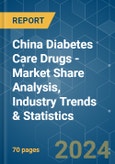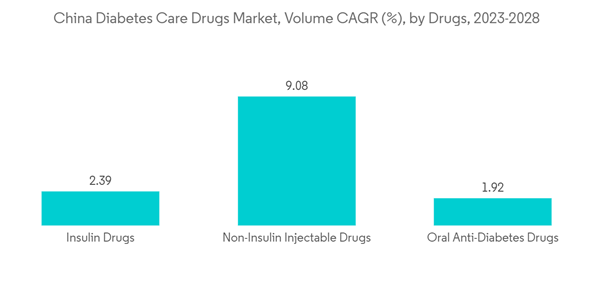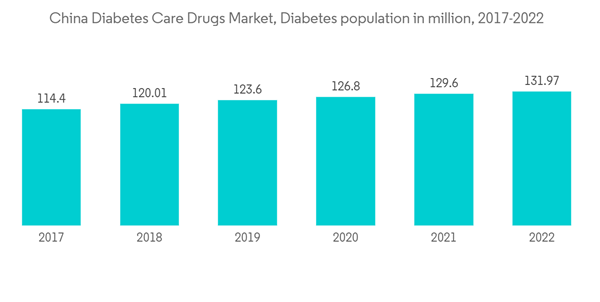According to WHO, 20% of persons with diabetes and diabetes-related disorders died in China in January 2020 COVID-19 fatalities. Diabetes affects about one out of every ten COVID-19 patients in China. Diabetes is linked to an increased risk of serious disease and death. The current study suggests that COVID-19 individuals with diabetes require focused early intervention. According to a Peking University (Beijing China) research, intensive care unit (ICU) patients had an approximately threefold higher prevalence of diabetes than non-ICU patients. Various studies on the prevalence of diabetes have diverse results. During the quarantine period, about 60% of persons with diabetes encountered food or medicine shortages, which was much greater than those without diabetes. Various studies on the prevalence of diabetes have diverse results. During the quarantine period, about 60% of persons with diabetes encountered food or medicine shortages, which was much greater than those without diabetes. Importantly, respondents who reported medication shortages had a 63% higher rate of COVID-19 infection.
Type 1 diabetes patients will account for 9.84% of China's overall diabetes population in 2021. Blood glucose swings among insulin users are common in China owing to lifestyle and eating habits, and self-monitoring of blood glucose fails to adequately reflect the blood glucose profile since it only shows the glucose concentration at a single time point. Thus, a trend in the demand for Diabetes Drugs in China has been noted. In the pharmaceutical sector, insulin has a substantial market share. Insulin is used by around 100 million individuals worldwide, including all Type 1 diabetes patients and 10% to 25% of Type 2 diabetic patients. Insulin production is exceedingly complex, with just a few insulin manufacturers on the market. As a result, there is tremendous competition among these companies, which are always seeking to meet patient requests by offering the highest-quality insulin.
China Diabetes Care Drugs Market Trends
The oral anti-diabetic drugs segment holds the highest market share in the China Diabetes Care Drugs Market in the current year
The oral anti-diabetic drugs segment holds the highest market share in the China Diabetes Care Drugs Market in the current year. It is expected to witness a CAGR of about 3.1% over the forecast period.Oral Anti-Diabetic Drugs are available internationally and are recommended for use when escalation of treatment for type 2 diabetes is required along with lifestyle management. Oral agents are typically the first medications used in treating type 2 diabetes due to their wide range of efficacy, safety, and mechanisms of action. Anti-diabetic drugs help diabetes patients control their condition and lower the risk of diabetes complications. People with diabetes may need to take anti-diabetic drugs for their whole lives to control their blood glucose levels and avoid hypoglycemia and hyperglycemia. Oral anti-diabetic agents present the advantages of easier management and lower cost, so they became an attractive alternative to insulin with better acceptance, which enhances adherence to the treatment.
China witnessed an alarming increase in the prevalence of diabetes in recent years. Patients with diabetes require many corrections throughout the day to maintain nominal blood glucose levels, such as oral anti-diabetic medication or ingestion of additional carbohydrates by monitoring their blood glucose levels. The rate of newly diagnosed Type 1 and Type 2 diabetes cases is seen to increase. The rapidly increasing incidence and prevalence of diabetic patients and healthcare expenditure are indications of the increasing usage of diabetic drugs.
China includes the world's largest population of people with diabetes, which continues to grow with the country's rapid urbanization. Chinese Ministry of Health established a network of National Demonstration Areas to develop pilot projects for health promotion, detection, and control of chronic diseases. Various local government departments with country officials are responsible for overall coordination. Primary care providers promote education and self-management of health conditions through appropriate dietary changes, control of tobacco use, and physical activity, which are beneficial for diabetes control.
As a long-term strategy, China is extending efforts to promote health, detect, and control diabetes with academic medical centers (AMCs) and hospitals with effective primary care. AMCs are usually overcrowded with patients with simple conditions, while the primary care system is under-equipped with basic medical infrastructure and an under-qualified workforce. The State Council encouraged health system integration by promoting a hierarchical medical system, a policy that attracts more patients to primary health centers before going to AMCs.
Owing to the above factors, the market will likely continue to grow.
The Glucagon-like peptide -1 receptor agonist Segment is expected to witness the highest CAGR in the China Diabetes Care Drugs Market over the forecast period
The Glucagon-like peptide -1 receptor agonist Segment is expected to witness the highest CAGR of about 5.2% in the China Diabetes Care Drugs Market over the forecast period.Glucagon-like peptide-1 receptor agonists (GLP-1RAs) are a class of medications used for treating type 2 diabetes, and some drugs are also approved for obesity. One of the benefits of this class of drugs over older insulin secretagogues, such as sulfonylureas or meglitinides, is that they include a lower risk of causing hypoglycemia. Besides being important glucose-lowering agents, GLP-1RAs contain significant anti-inflammatory and pulmonary protective effects and an advantageous impact on gut microbes' composition.
They can be safely used with all other glucose-lowering therapies except vildagliptin. Dulaglutide (Trulicity) is a weekly subcutaneous GLP1RA that reduces HbA1c with additional weight loss and cardiorenal protection benefits. Therapy with dulaglutide allows many patients to reach and maintain target HbA1c without insulin and/or sulfonylureas, eliminating the associated hypoglycemia risk. GLP1RAs elicit greater weight reduction and are recommended over SLGT2 inhibitors when cerebrovascular disease other than heart failure or renal disease predominates.
The Healthy China 2030 Plan, approved by the State Council and the Party's Central Committee, puts diabetes, cancer, hypertension, and cardiovascular diseases in the four major non-communicable diseases to 'control the prevalence and reduce the probability of early death.' The central government launched a 2017-2025 plan to control non-communicable diseases, which includes increasing the regular monitoring and self-management rate for diabetes patients from 50% to 70% by 2025. Such factors are expected to boost market growth.
China Diabetes Care Drugs Industry Overview
The China Diabetes Care Drugs Market is moderately fragmented, with major manufacturers, namely Eli Lilly, Sanofi, Novo Nordisk, AstraZeneca, and other generic players, holding a presence in the region. The market for oral drugs, like Sulfonylureas and Meglitinides, comprises more generic players. The intensity of competition among the players is high, as each player is striving to develop new drugs and offer them at competitive pricing. Furthermore, players are tapping into new markets to increase their market shares, especially in emerging economies where the demand is very high compared to the supply.Additional Benefits:
- The market estimate (ME) sheet in Excel format
- 3 months of analyst support
This product will be delivered within 2 business days.
Table of Contents
Companies Mentioned (Partial List)
A selection of companies mentioned in this report includes, but is not limited to:
- Takeda
- Novo Nordisk A/S
- Pfizer
- Eli Lilly and Company
- Janssen Pharmaceuticals
- Astellas
- Boehringer Ingelheim
- Merck and Co.
- AstraZeneca
- Bristol Myers Squibb
- Novartis
- Sanofi Aventis
Methodology

LOADING...










